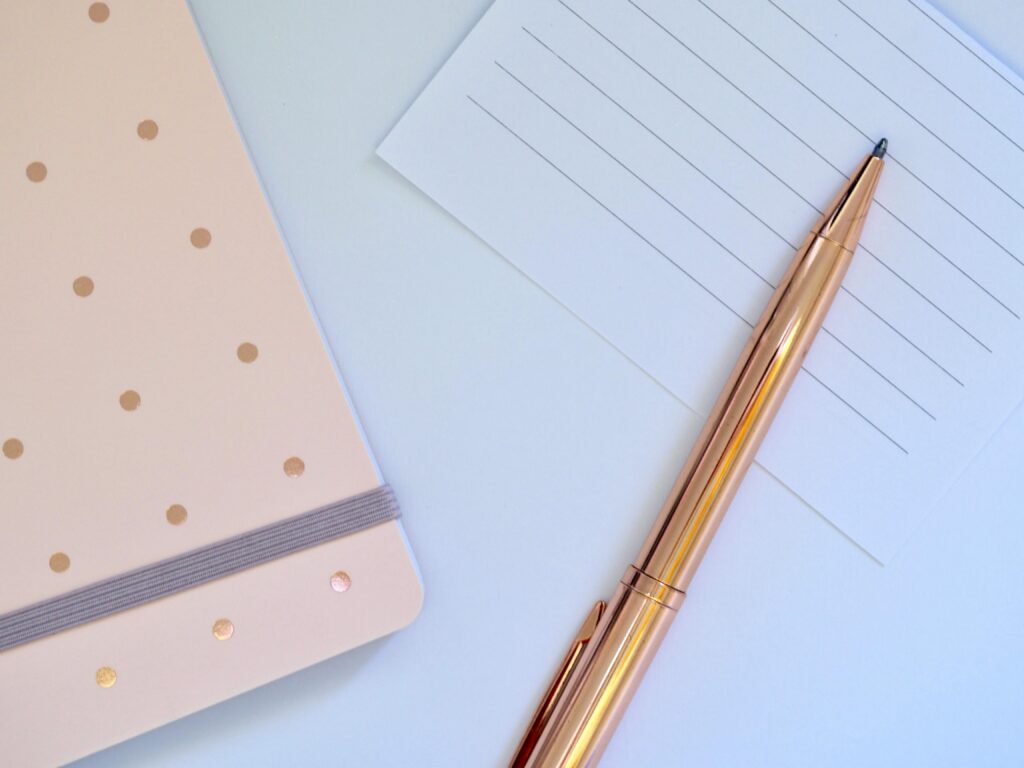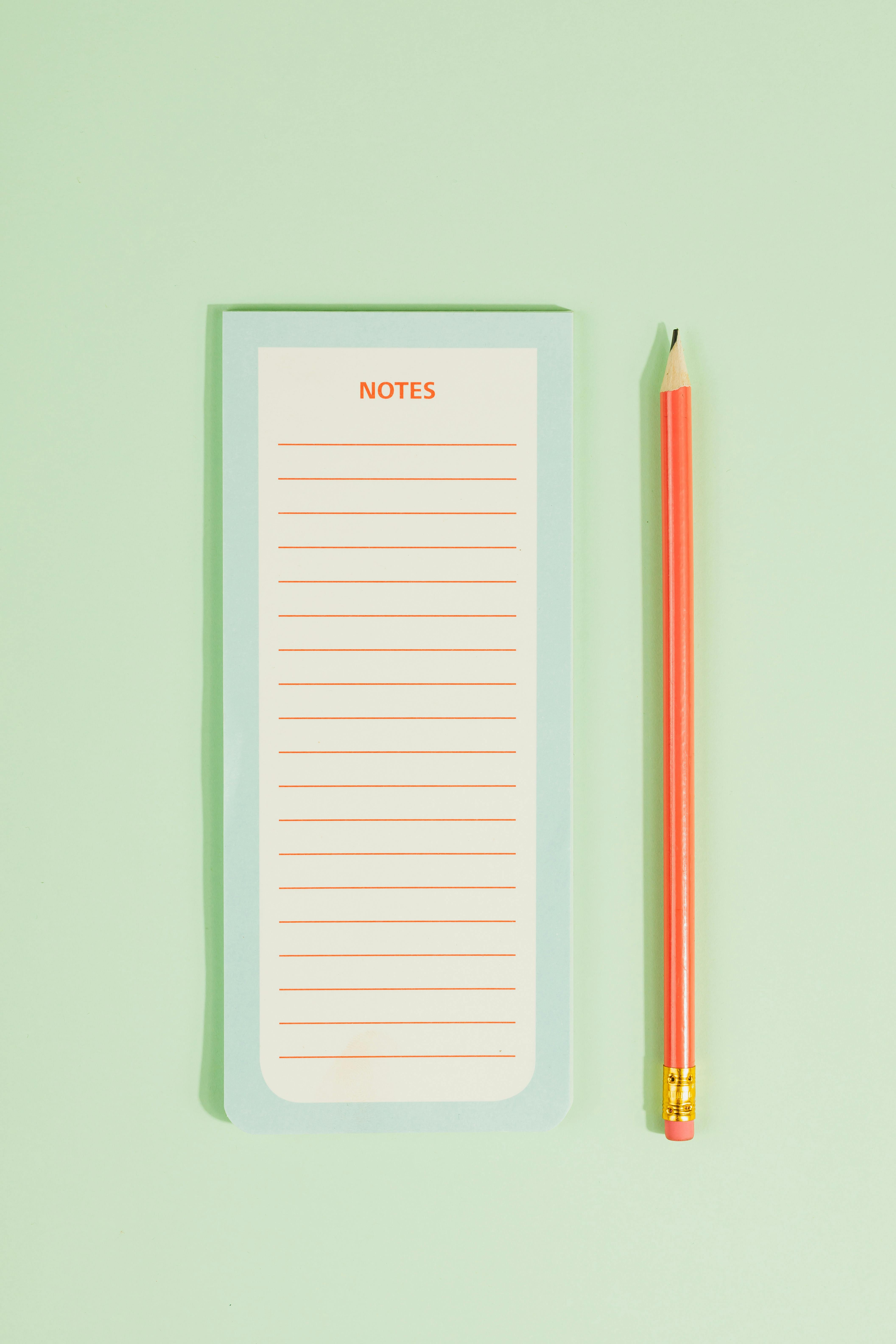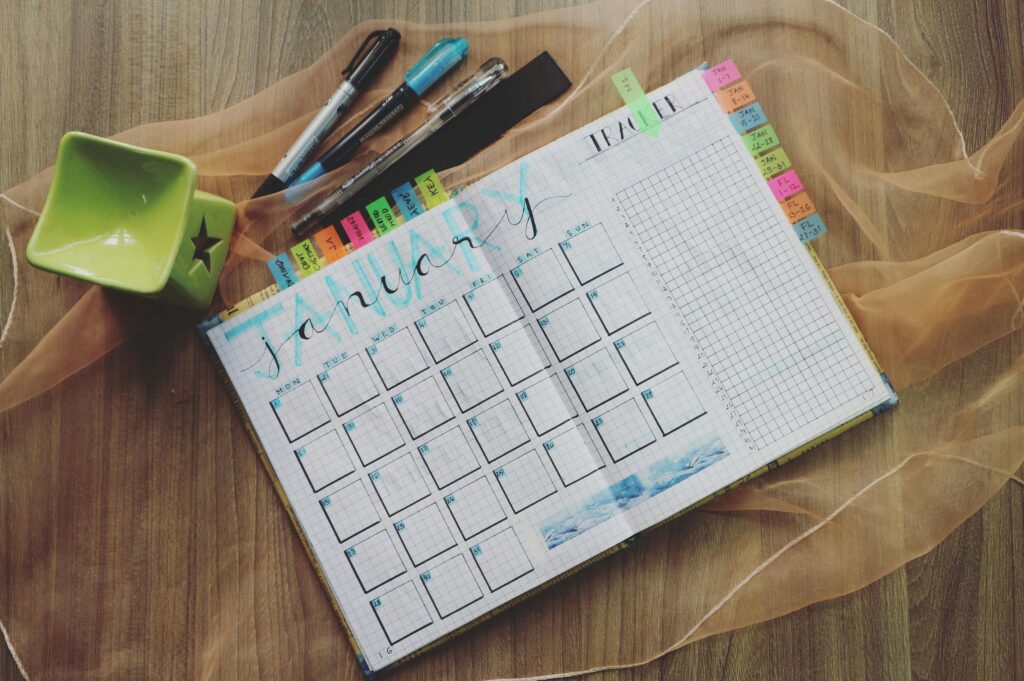17 Of The Best Note Organization Ideas For The School Year
Organizing all of your notes for the school year is crucial for effective studying and planning. Here are the best note organization ideas!

Let's face it: school can throw a lot at you, and it’s easy to feel overwhelmed by all the information. Handouts, textbooks, digital resources, and lecture notes can quickly pile up, making it tough to find what you need when it's time to study for a test or finish a project. That's where having good note organization ideas comes in handy. By finding a system that works for you, you can make your study sessions more productive and less stressful.
There are so many note organization ideas and hacks, each with its own perks. Digital tools like note-taking apps are super convenient and let you access your notes from anywhere. They also make it easy to search through your notes quickly. But if you prefer something more hands-on, traditional methods like binders, notebooks, and index cards can be just as effective. Some people even mix both digital and paper methods for the best of both worlds.
So, whether you love colorful diagrams or prefer detailed written notes, there’s something here for everyone. Grab your favorite notebook, start up your laptop, or open your tablet, and let’s dive into the world of organized note-taking. By the end of this post, you'll have all the note organization ideas and tips to keep your school life in order, making for a smoother and more successful year.
This post is all about the best note organization ideas.
Note Organization Ideas
1. Digital Notebooks

Digital notebooks, such as those offered by apps like OneNote or Evernote, provide a flexible and convenient way to organize your notes. These apps allow you to create digital notebooks for each subject, which can be accessed from any device with internet connectivity.
To effectively use this method, create a separate notebook for each subject and use sections and pages to further organize your notes. You can add tags to highlight key concepts, search for specific terms, and even insert multimedia elements like images, audio recordings, and hyperlinks. This level of organization not only makes your notes more interactive and engaging but also ensures that you can quickly find and review the information you need.
The ability to sync your notes across multiple devices means that you can access your study materials anytime, anywhere, providing added convenience and flexibility.
2. Lecture Recording

Recording lectures is a useful way to ensure you don’t miss any important information and can review the material later. This method is especially beneficial if you have difficulty keeping up with note-taking during class.
Use a recording device or app on your smartphone to capture the lecture. Make sure to get permission from your instructor before recording. After the lecture, listen to the recording and take detailed notes, pausing as needed to ensure you capture all the key points. This method allows you to review the material at your own pace and ensures you don’t miss any important details.
Additionally, you can revisit the recordings to reinforce your learning and clarify any points you may have missed during the lecture. By combining lecture recordings with detailed note-taking, you can create a comprehensive and effective study resource.
3. Binder Organization

Using plastic sleeves in your binders is an excellent way to protect important documents, handouts, and notes from wear and tear. This method ensures that your papers remain in good condition and prevents them from falling out or getting lost.
You can place each document or handout in a plastic sleeve before inserting it into your binder. Organize the sleeves by subject or date, using dividers to separate different sections. Plastic sleeves make it easy to organize materials and quickly flip through your binder to find specific documents.
By keeping your papers organized and protected, you’ll have a reliable and tidy collection of all your study materials, which is especially useful when preparing for exams or completing assignments. This method not only enhances the organization of your notes but also ensures their longevity and accessibility.
4. Highlighting

Using different colored highlighters to emphasize key points, important dates, and critical concepts in your notes makes important information stand out.
This visual differentiation helps you quickly locate and review key material. To use this, develop a consistent color-coding system for different types of information (e.g., yellow for definitions, pink for dates, green for formulas). This not only makes your notes more visually appealing but also aids in retention by engaging your visual memory. Highlighting can be particularly helpful when reviewing for exams or summarizing chapters, as it allows you to quickly identify and focus on the most important information.
By incorporating highlighting into your note-taking process, you can create a more organized and effective study resource.
5. Summaries

Writing a brief summary of each lecture or chapter at the end of your notes helps reinforce what you’ve learned and provides a quick reference for studying.
Summarizing forces you to process and condense the material, improving your understanding and retention. Take a few minutes after each class or study session to write a concise summary of the main points. This summary will be invaluable when reviewing your notes, as it provides a quick overview of the key concepts without having to read through all the details again.
Regularly writing summaries helps you reinforce your learning and ensures that you have a clear understanding of the material, making it easier to review and prepare for exams.
Related Post You Might Like: 11 LIFE-CHANGING HIGH SCHOOL NOTE-TAKING TIPS THAT WILL MAKE YOU A STRAIGHT-A STUDENT
6. Notebook Index

Creating an index at the beginning of each notebook allows you to quickly find topics or dates. Number your pages and list the topics covered on each page in the index.
This makes it easier to locate specific notes later on, saving you time and effort when reviewing for exams or working on assignments. An index also provides a clear overview of the content in your notebook, helping you see how topics are connected and ensuring that you don’t overlook important material.
Set aside a few pages at the beginning of your notebook for the index and update it regularly as you add new notes. By consistently using an index, you can improve your note organization and make it easier to find and review important information.
7. Lecture Outlines

Pre-reading lecture materials and creating outlines before class helps you follow along more effectively during the lecture and ensures you capture key points.
Start by reviewing the assigned readings or lecture slides before class and creating a basic outline of the main topics and subtopics. During the lecture, fill in details and examples as they are discussed. This approach not only makes it easier to take comprehensive notes but also improves your understanding and retention of the material.
By creating lecture outlines, you can prepare yourself for class and ensure that you capture all the important information, making your notes more organized and effective.
8. Weekly Review

Setting aside time each week to review and reorganize your notes helps reinforce learning and ensures your notes stay organized throughout the semester.
During your weekly review, go through your notes, highlight key points, update your summaries. You can also reorganize any loose papers or digital files. This regular maintenance helps prevent your notes from becoming disorganized. It also makes it easier to stay on top of your studies.
Additionally, the process of reviewing your notes each week reinforces your learning and helps you retain information more effectively. By incorporating a weekly review into your study routine, you can ensure that your notes remain organized. You also stay on top of your studies.
9. Tabs and Labels

Tabs and labels are incredibly useful tools for maintaining an organized and accessible note system. By adding tabs to your notebooks or binders, you create clear visual markers. This divides your notes into distinct sections, such as different chapters or topics.
This approach not only makes it easier to locate specific information. But it also helps you maintain a logical flow in your study materials. You can begin by selecting or creating tabs that are durable and easy to read. Label each tab clearly with the relevant subject, topic, or date to ensure quick identification. For binders, you can use adhesive tabs or pre-printed divider sets. And for notebooks, you can attach sticky tabs or create your own using cardstock. Labels should be used to mark sections within these tabs, such as "Lecture Notes," "Homework," or "Projects."
By incorporating tabs and labels, you streamline your study process. Overall, making it simpler to navigate through your notes and stay organized throughout the academic year.
10. Color-Coding

Color-coding your notes is an excellent way to visually organize and differentiate between various subjects and topics. This method involves assigning different colors to each subject or type of information, which makes it easier to find and review specific notes at a glance.
To use color-coding, you can use colored pens, highlighters, or sticky notes. For example, you might use blue for math, red for history, and green for science. Within each subject, you can further categorize information by using different shades or combinations of colors. This method not only makes your notes more visually appealing but also helps reinforce memory through visual cues.
Over time, your brain will start associating certain colors with specific subjects or types of information. This will make it quicker to recall details during study sessions or exams.
11. Bullet Journals

Bullet journaling is a customizable and highly effective way to track your study progress, assignments, and notes. This method involves using bullet points, symbols, and colors to differentiate between tasks, notes, and important dates.
Start by setting up a bullet journal with sections for daily logs, monthly overviews, habit trackers, and specific study goals. Use bullet points and symbols to mark different types of entries, such as tasks, events, and notes. The flexibility of bullet journaling allows you to create a system that suits your unique needs and preferences. This method not only helps you stay organized. But it also encourages you to reflect on your study habits and progress regularly.
Additionally, the process of creating and maintaining a bullet journal can be therapeutic. It can help reduce stress, providing both organizational and mental health benefits.
This post was all about note organization ideas.